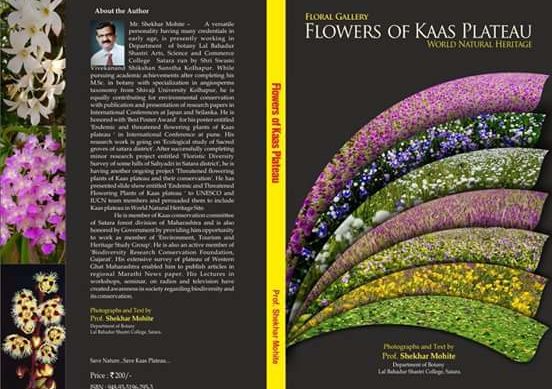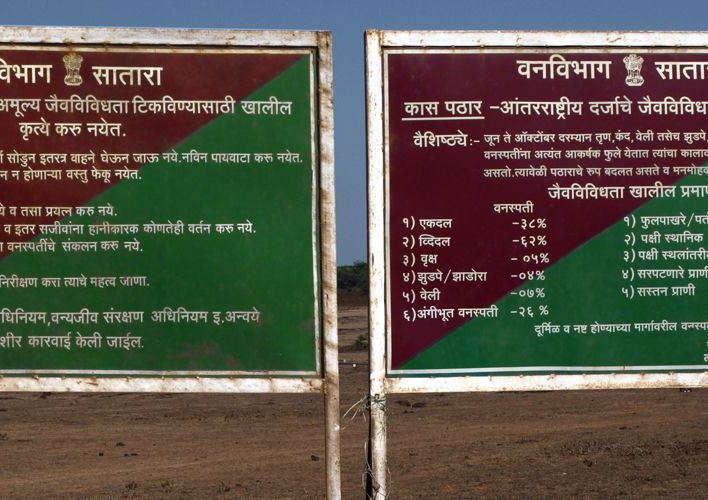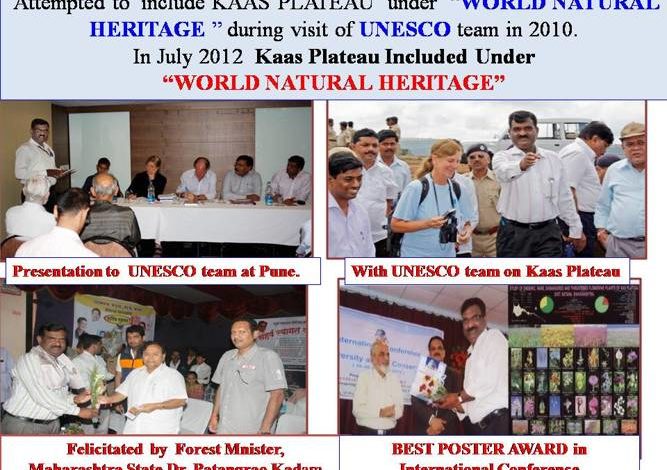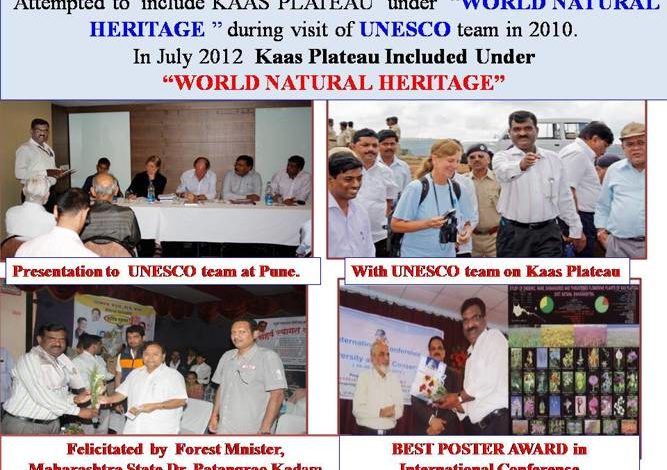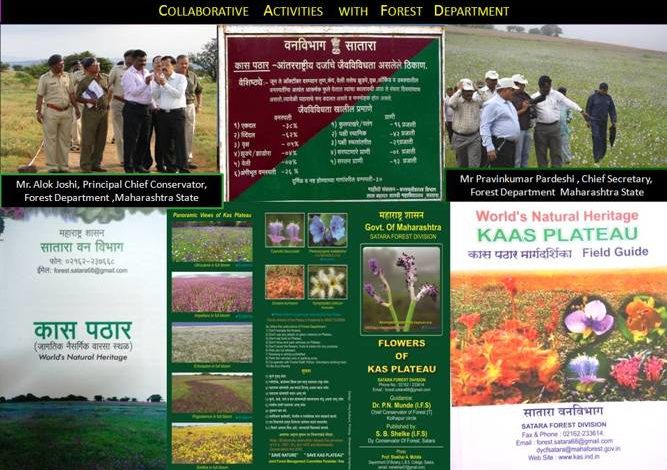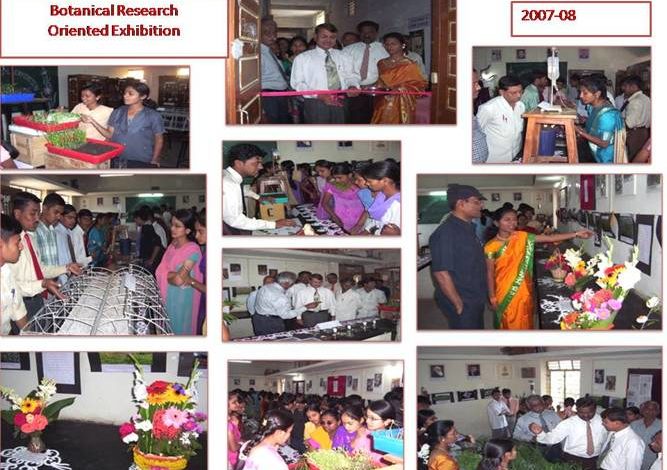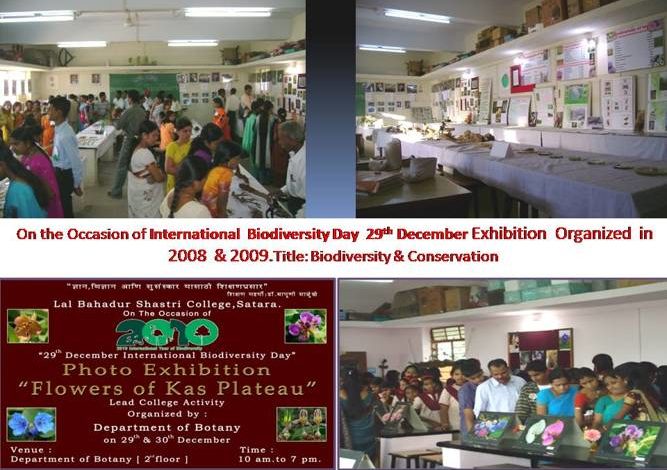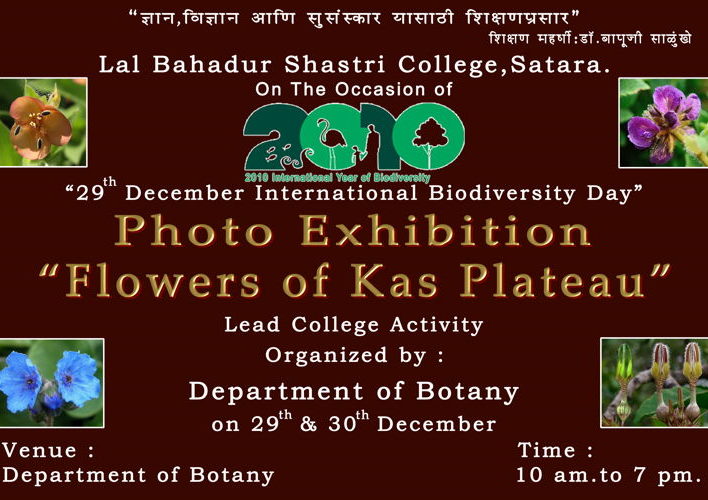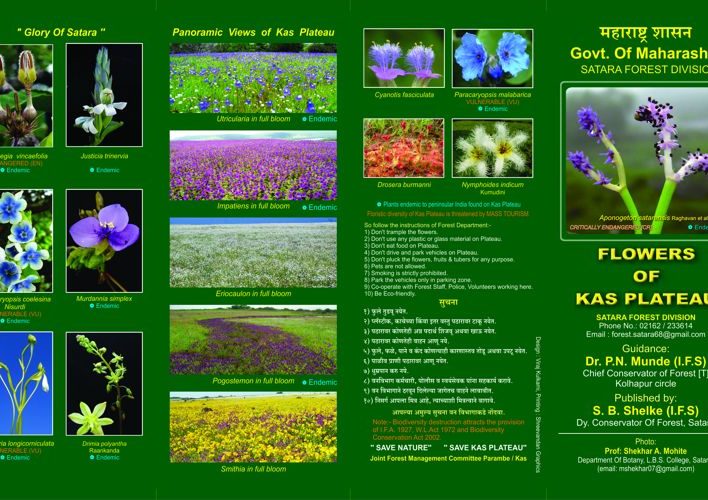Kaas Plateau Information
The Western Ghats is globally recognized as a region of immense global importance for the conservation of biological diversity. In Maharashtra 70% of plant Species are found on Plateau only. The Kaas Plateau is one of the important plateaus in Sahyadri ranges of Western Ghat located in Satara district of Maharashtra. The plateau possesses very unique herbaceous ephemeral vegetation. The floristic pattern of Kaas plateau differs due to factors like rainfall, temperature, humidity, type of soil, topography and microclimate.
A Laterite plateau of Kaas is in Satara District of Maharashtra. Kaas Plateau has a status of being the “Plateau of flowers”. It includes in the main range of Sahyadri. Kaas Plateau is in full bloom during the monsoon season. It is an interesting location to watch herbaceous flora of post monsoon season. It includes herbs, Shrubs, Climbers, ephemerals, bulbous, tuberous, Saprophytic, Parasitic, insectivorous Plants and epiphytic orchids .From July each species dominates the landscape of Kaas plateau for few weeks. Kaas plateau is rich in biodiversity. This region has been globally recognized as one of the hot spot of biodiversity, and to be included under word’s natural heritage.
Total area of plateau is 1792 Ha. and has a high degree of endemism. Kaas Plateau is an outstanding example representing significant ongoing ecological and biological processes in the evolution and development of terrestrial and fresh water ecosystem and communities of plants and animals. The plateau contains most important and significant natural habitat for in-situ conservation of biological diversity, including those containing endemic and threatened species of outstanding universal value from the point of view of science and conservation. Hence area is nominated for Worlds Natural Heritage Site.
The Kaas plateau changes the colours after every 15-20 days as the monsoon progresses since June to October. The progress is in terms blue colour of Utricularias, white colour of Eriocaulons and Habanerias, pink and violet colour of Impatiens, yellow colour of Senecios and Smithias, and purple colour of Pogostemon species. Many rare, endemic, endangered and threatened plants like Rotala, Ceropegias, Murdannia, and Arisaemas. Dipcadi, Flemingia Isachne, Aponogeton, Glyphochloa, Chrysopogon etc., grow on these plateau.
This plateau is connected to Satara town by a hill ridge passing through village like Andhali, Kamathi, Petri and Yavasteshwar. The major portion of the plateau is Reserved Forests. It contains the forest areas from village Kas, Akiv, Andhari, Phalani, Atali, Kamathi and Sawali.
Today, the world is facing series of biological security problems such as biodiversity damage, environmental deterioration, and reduction of forests and loss of water. People’s awareness on the conservation and sustainable management of forest has been greatly increased. Most natural conservation area locates in Plateau regions. It has unique ecosystem with rich biodiversity. Today Kaas Plateau biodiversity is under serious threat due to mass tourism, Overgrazing, over exploitation, anthropogenic pressure, deforestation, exotic weeds, fires and global climatic change. The present book will be of great use to know the present status of RET species and to decide plan of action for their conservation. Conservation cannot be conducted in isolation from humans and for conservation to be successful and sustainable there needs to be local community involvement.
Kaas plateau is located 30 km.west to Satara City of Maharashtra State and situated between latitude 170 42′ N to17045′, longitude 730 47′ to 730 56′,is entirely in Western Ghats. It is on border of Jawali & Satara Talkula. The area is 1792 hectares. The average height is 1213 meter ASL. Plateau is part of deccan tableland and slopes towards east and west.
Thin layer of laterite soil occur on top of porous rock. Climate is tropical monsoon pleasant & healthy. Summer, Rainy & Winter. The average rainfall is about 2000 to 2500 mm.Av. The minimum temp. in winter lowers to 150 or below, where as maximum temp. ranges between 300 C to 380 C in summer.
Kaas Plateau is included under world Natural Heritage due to Endemic and Threatened Flowering Plants as per Operational Guidelines for the implementation of the World Heritage Convention selection criteria no. IX & X. The protection, management, authenticity and integrity of Kaas Plateau is important to keep the status of World Natural Heritage given by UNESCO.
Environment
Contribution of Department of Botany, Lal Bahadur Shastri Arts, Science and Commerce College Satara in Conservation of “Kaas Plateau – World Natural Heritage”
- Prof. Mohite S. A. Contributing for environmental conservation with publication and presentation of research papers in International Conferences at Japan and Srilanka. he is honored with ‘Best Poster Award’ for his poster entitled ‘Endemic and threatened flowering plants of Kaas plateau ’ in International Conference at pune.
- Successfully completed minor research project entitled ‘Floristic Diversity Survey of some hills of Sahyadri in Satara district’, and ‘Threatened flowering plants of Kaas plateau and their conservation’.
- Prof: Mohite S.A. presented slide show entitled ‘Endemic and Threatened Flowering Plants of Kaas plateau ’ to UNESCO and IUCN team members and persuaded them to include Kaas plateau in World Natural Heritage Site.
- All members of Department are associated with ‘Biodiversity Research Conservation Foundation, Gujarat’.
- Prof: Mohite S.A. is member of Kaas conservation committee of Satara forest division of Maharashtra and is also honored by Government by providing him opportunity to work as member of ‘Environment, Tourism and Heritage Study Group’.
- Department of Botany has involved in survey of plateau of Western Ghat Maharashtra and published articles in regional Marathi News paper.
- Lectures of faculty members in workshops, seminar, on radios and television have created awareness in society regarding biodiversity and its conservation.
- Organized National Conference and “Botanical and Biodiversity Conservation Exhibitions’’ to create awareness among the Students and Society.
- Collaborative Activities with Satara Forest Division.

